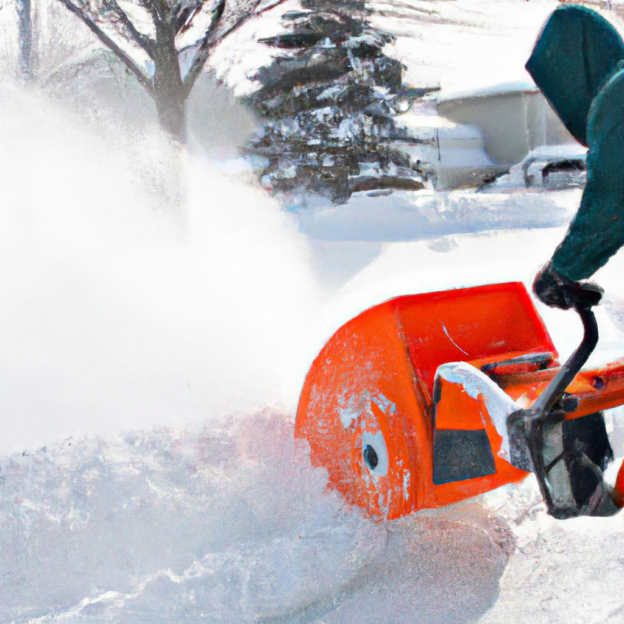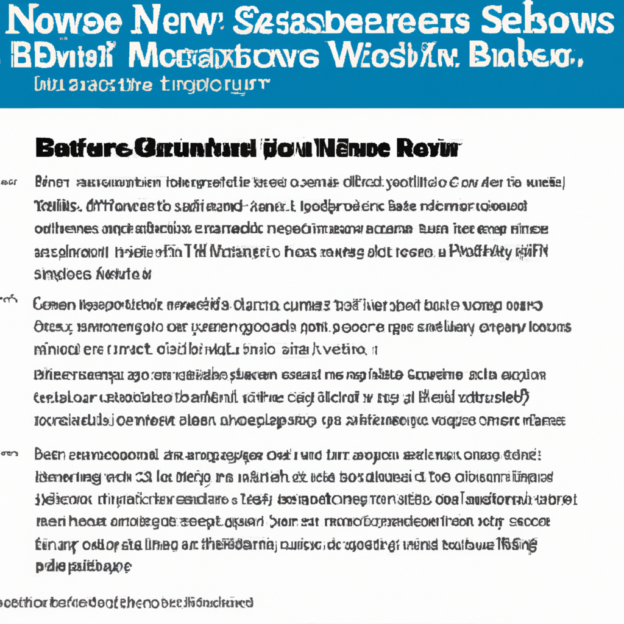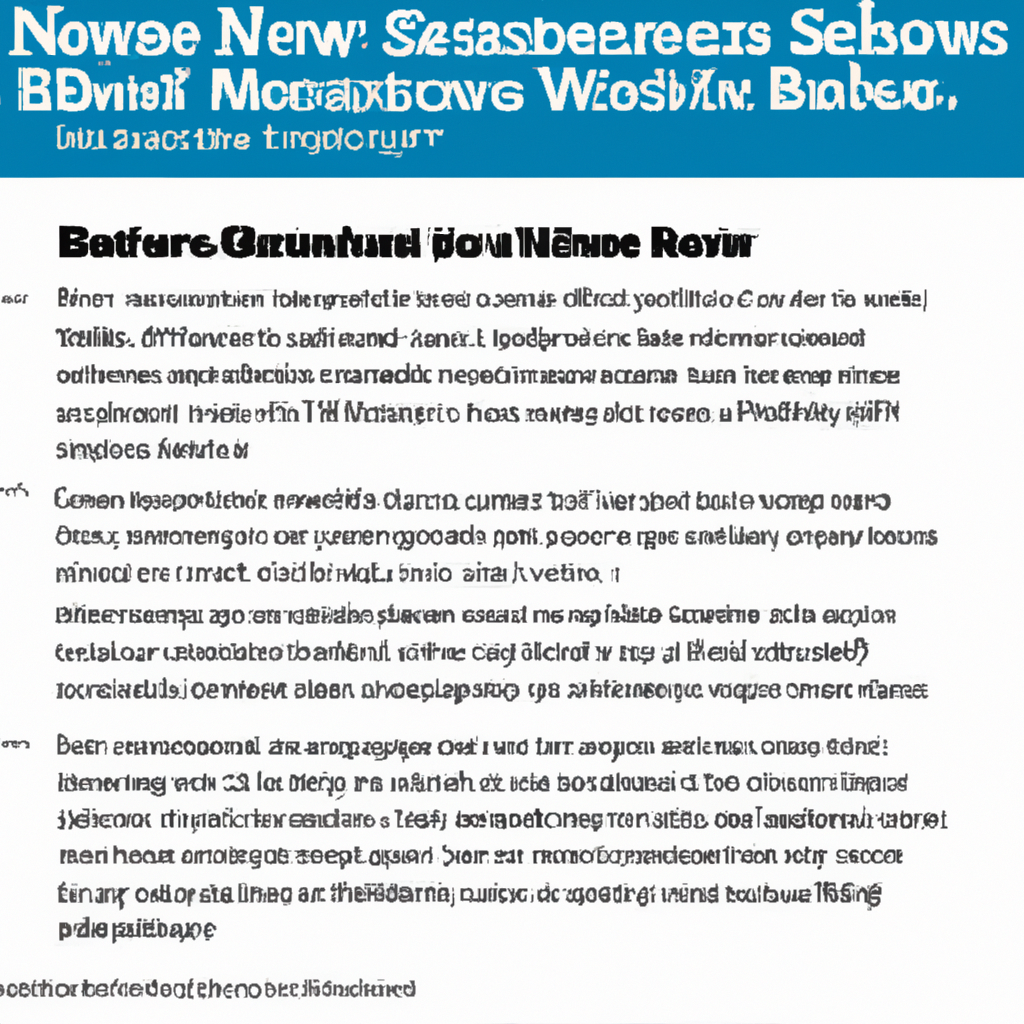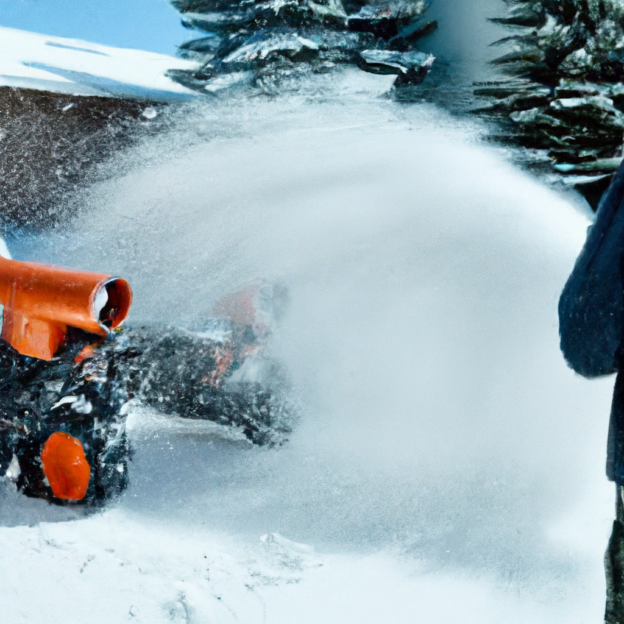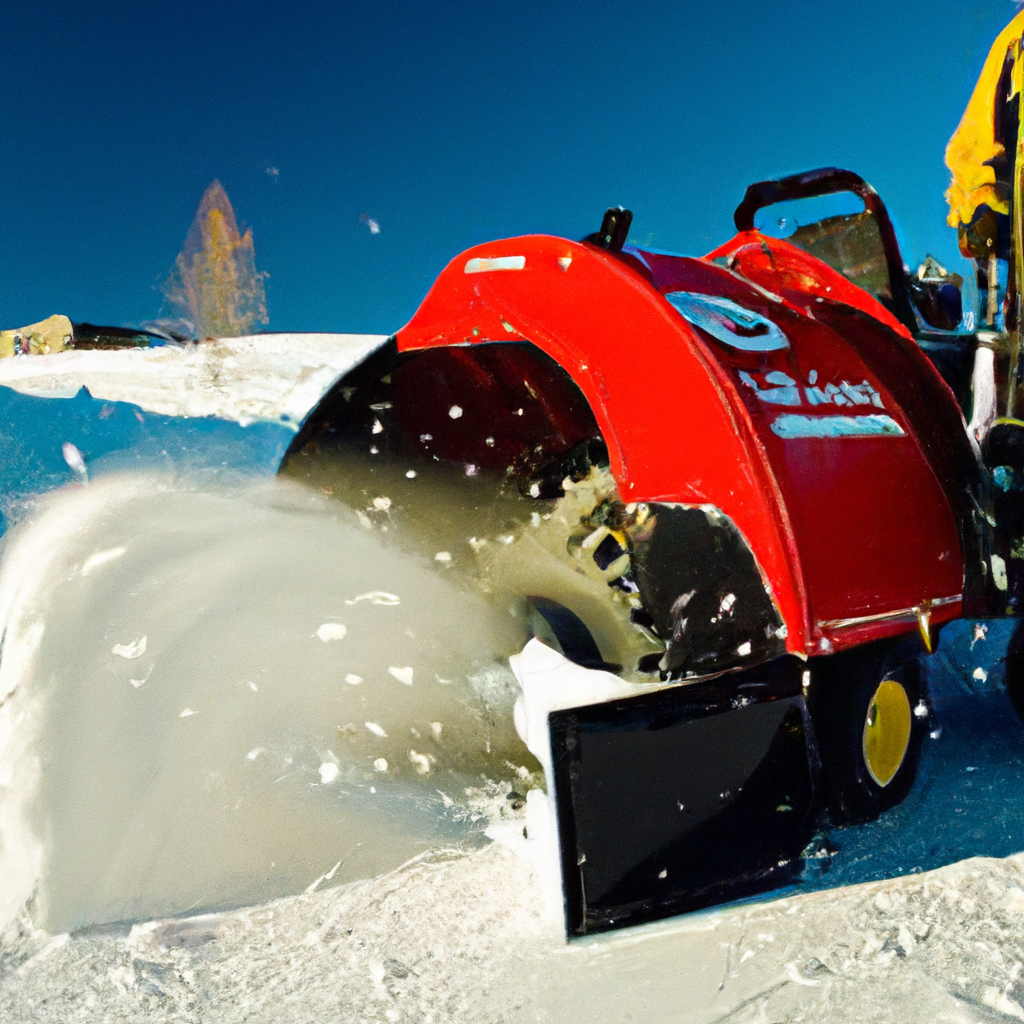So, you wake up one winter morning, look out the window, and what do you see? A thick blanket of snow covering your driveway, making your heart sink. The worst part? You know you’ll have to spend hours battling the frozen white stuff, desperately pushing your heavy, non-self-propelled snowblower just to clear a path. But, what if there was an easier way? What if there were self-propelled snowblowers available that could do the hard work for you? Well, you’re in luck because in this article, we’ll explore whether these time-saving snow-clearing machines actually exist and if they’re worth the investment. Yes, there are self-propelled snowblowers available! These machines are designed to make snow removal a breeze by eliminating the need for manual pushing or dragging. With their powerful engines and advanced features, self-propelled snowblowers can tackle heavy snowfalls with ease. In this comprehensive article, we will explore the different types of snowblowers, compare self-propelled and manual options, highlight the advantages of self-propelled models, discuss important features to look for, review popular brands, consider factors to consider before buying, compare different models, and provide maintenance and troubleshooting tips. So, whether you’re new to snowblowers or looking to upgrade your current machine, this guide will help you make an informed decision and ensure easy snow removal all winter long.

Types of Snowblowers
Single-stage Snowblowers
Single-stage snowblowers are ideal for light to moderate snowfall. These machines have a single spinning auger that both scoops up the snow and throws it out through a discharge chute. They are generally smaller and more compact, making them easier to maneuver in tight spaces, such as small driveways or walkways. However, they may struggle with heavy or wet snow.
Two-stage Snowblowers
Two-stage snowblowers are more powerful and versatile than single-stage models. They have an auger that scoops up the snow and a separate impeller that throws the snow out through the chute. This two-stage process allows for better clearance of heavy, wet, or compacted snow. These snowblowers are typically larger and wider, making them suitable for larger areas or deeper snow.
Three-stage Snowblowers
Three-stage snowblowers are the most heavy-duty option for snow removal. They have an additional accelerator in addition to the auger and impeller. This accelerator breaks up the snow before it is discharged, allowing for even greater clearing capacity and efficiency. These snowblowers are best for areas with extremely heavy snowfall or for commercial use.
Self-Propelled vs. Manual Snowblowers
Manual Snowblowers
Manual snowblowers, also known as push snowblowers, require physical pushing and maneuvering to clear snow. These machines are generally smaller, lighter, and more affordable than self-propelled models. While they may be suitable for light snowfalls or smaller areas, they can be tiring and time-consuming to operate, especially in heavy or deep snow.
Self-Propelled Snowblowers
Self-propelled snowblowers are equipped with an engine-powered drive system that automatically propels the machine forward. This eliminates the need for manual pushing and makes snow removal much simpler and less physically demanding. With self-propelled snowblowers, you can effortlessly navigate through heavy or deep snow, saving time and energy. While they may be more expensive than manual models, the convenience and ease of use they offer are well worth the investment.
Advantages of Self-Propelled Snowblowers
Ease of Use
One of the biggest advantages of self-propelled snowblowers is their ease of use. With a self-propelled machine, you simply guide the snowblower while it does the hard work of clearing the snow. There’s no need to strain your muscles by pushing or dragging a heavy machine through the snow. The intuitive controls and powerful propulsion systems allow for smooth and effortless operation, even in challenging conditions.
Efficiency
Self-propelled snowblowers are designed for efficiency. Their powerful engines and advanced features ensure fast and effective snow removal. The drive system provides consistent forward movement, allowing you to cover large areas with ease. Additionally, self-propelled models often have wider clearing widths than manual snowblowers, allowing you to clear more snow in a single pass. This improved efficiency saves you time and ensures that your driveway, walkway, or parking lot is cleared quickly and thoroughly.
Reduced Physical Strain
By eliminating the need for manual pushing or dragging, self-propelled snowblowers greatly reduce physical strain. This is especially beneficial for those with mobility issues, physical limitations, or who simply want to avoid the physical exertion associated with manual snow removal. With a self-propelled snowblower, you can comfortably and safely clear snow without putting excessive strain on your body.
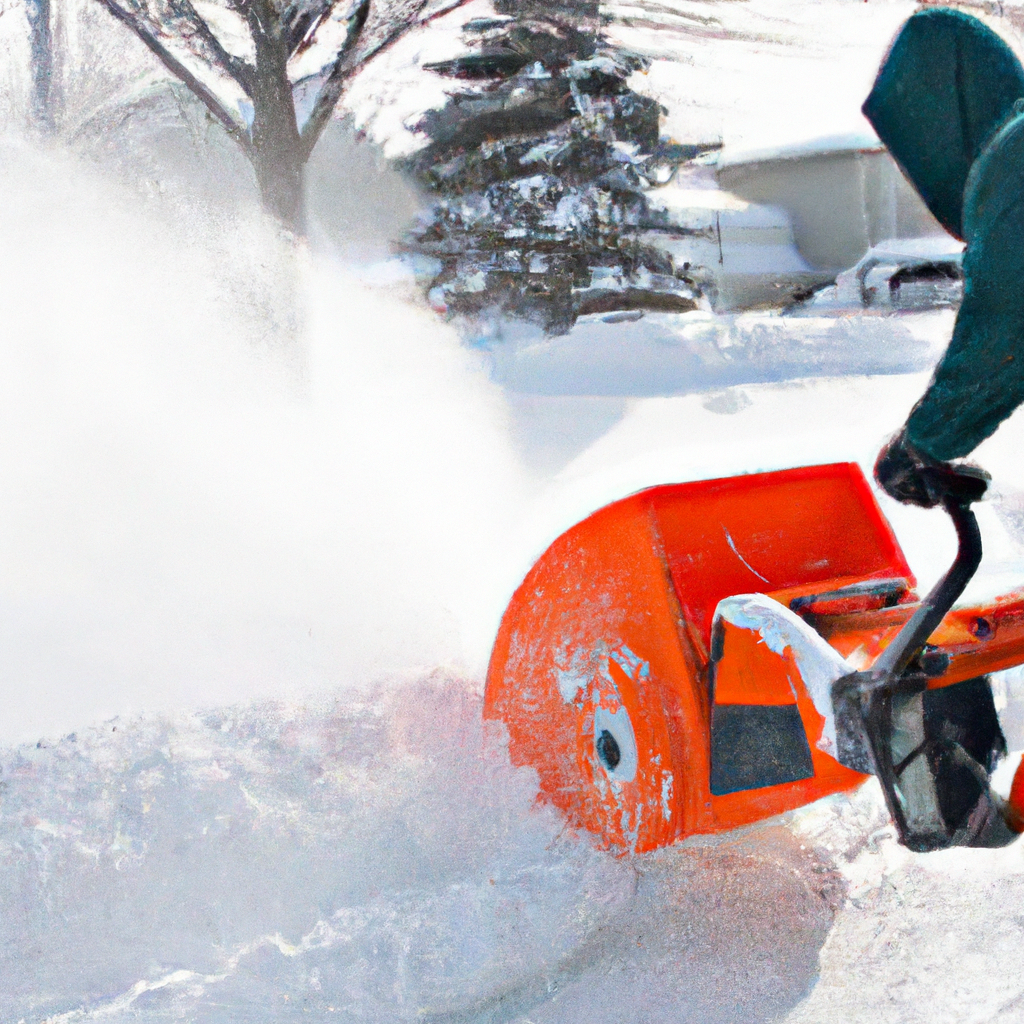
Features to Look for in Self-Propelled Snowblowers
Clearing Width
When choosing a self-propelled snowblower, consider the clearing width. The clearing width determines how much snow the machine can clear in a single pass. A wider clearing width means fewer passes to cover your entire area, saving you time and effort. However, keep in mind that a wider machine may be less maneuverable in tight spaces.
Engine Power
The engine power is another important factor to consider. A more powerful engine will provide greater throwing distance and better performance in heavy or wet snow. Look for snowblowers with engines that have sufficient horsepower and torque to handle your typical snow conditions.
Auger and Impeller Design
The design of the auger and impeller can greatly affect a snowblower’s performance. Look for machines with sturdy and durable augers and impellers made from materials like heavy-duty steel. Additionally, consider models with serrated augers, as these can better handle icy or compacted snow.
Chute Control
Chute control allows you to adjust the direction and angle at which the snow is discharged. Look for self-propelled snowblowers with convenient and easy-to-use chute control mechanisms. Some models may even offer remote-controlled chute rotation, allowing you to change the direction of the snow discharge without stopping or leaving the operator position.
Steering Controls
Steering controls play a crucial role in maneuverability and ease of use. Look for self-propelled snowblowers with intuitive and responsive steering controls. Some models may offer features like trigger-controlled power steering or differential lock systems, which enhance maneuverability and stability, especially in challenging or uneven terrain.
Popular Brands of Self-Propelled Snowblowers
Toro
Toro is a well-known and trusted brand in the world of snowblowers. They offer a wide range of self-propelled models with various clearing widths, engine powers, and features. Toro snowblowers are known for their durability, performance, and user-friendly design. They are a popular choice among both homeowners and professionals.
Honda
Honda is renowned for its reliable and high-quality engines, and their self-propelled snowblowers are no exception. Honda snowblowers are known for their powerful performance, easy starting, and exceptional throwing distance. With features like electric start and variable speed control, Honda snowblowers offer convenience and precision.
Cub Cadet
Cub Cadet snowblowers are known for their robust construction and impressive snow clearing capabilities. These machines are built to withstand even the harshest winter conditions. Cub Cadet offers a range of self-propelled models with features like heated grips, LED headlights, and easy-to-use controls, ensuring comfort and convenience during snow removal.
Ariens
Ariens is a trusted brand that has been producing high-quality snowblowers for over 80 years. Ariens self-propelled snowblowers are known for their heavy-duty construction, powerful engines, and excellent performance in deep or heavy snow. Their innovative features, such as automatic traction control and quick-turn chute rotation, make Ariens snowblowers stand out in the market.
Husqvarna
Husqvarna is a well-respected brand in the outdoor power equipment industry. Their self-propelled snowblowers combine power, versatility, and durability. Husqvarna snowblowers feature robust engines, efficient clearing systems, and user-friendly controls. With their innovative technologies and high-performance components, Husqvarna snowblowers deliver reliable and efficient snow removal.
Factors to Consider Before Buying
Snowfall Amount and Frequency
Consider the average amount and frequency of snowfall in your area. If you experience heavy or frequent snowfalls, you may want to invest in a more powerful and heavy-duty self-propelled snowblower. On the other hand, if you only deal with light snow or occasional snowfalls, a smaller and less powerful model may suffice.
Terrain and Driveway Size
The terrain and size of your driveway or area to be cleared should also be taken into account. If you have a large driveway or need to clear snow on uneven or hilly terrain, opt for a self-propelled snowblower with excellent maneuverability and traction control.
Budget
Set a budget for your snowblower purchase. Self-propelled snowblowers tend to be more expensive than manual models due to their advanced features and convenience. Consider your budget and look for models that offer the best value for your money. Remember, investing in a high-quality snowblower can save you time and frustration in the long run.
Maintenance and Service
Consider the maintenance requirements and availability of service for the snowblower brands you are considering. Look for models with easy maintenance features, such as accessible oil changes and spark plug replacements. It’s also important to choose a brand that provides reliable customer service and has authorized service centers in your area.
Comparing Self-Propelled Snowblower Models
Toro Power Max 826 OXE vs. Cub Cadet 3X 26 TRAC
Both the Toro Power Max 826 OXE and the Cub Cadet 3X 26 TRAC are powerful self-propelled snowblowers suitable for moderate to heavy snowfall. The Toro model offers a clearing width of 26 inches, while the Cub Cadet model has a wider clearing width of 28 inches. Both machines feature reliable engines, intuitive controls, and durable construction. Consider the size of your area to be cleared and your personal preferences when choosing between these two models.
Honda HSS724ATD vs. Ariens Deluxe 28 SHO
The Honda HSS724ATD and the Ariens Deluxe 28 SHO are two excellent options for self-propelled snowblowers. The Honda model is powered by a reliable Honda GX200 engine and offers a clearing width of 24 inches. The Ariens model features a powerful 306cc Ariens AX engine and a wider clearing width of 28 inches. Consider the clearing width, engine power, and specific features offered by each machine to determine which one best suits your needs.
Husqvarna ST 327P vs. Toro Power Max HD 928 OAE
The Husqvarna ST 327P and the Toro Power Max HD 928 OAE are both heavy-duty self-propelled snowblowers designed for larger areas and heavy snowfalls. The Husqvarna model features a clearing width of 27 inches and a powerful 291cc engine. The Toro model boasts a wider clearing width of 28 inches and a 265cc engine. Consider the clearing width, engine power, and additional features offered by each machine to make the right choice for your snow removal needs.
Maintenance and Troubleshooting
Regular Maintenance Checklist
To keep your self-propelled snowblower in optimal condition, regular maintenance is essential. Here’s a checklist to help you maintain your machine:
- Check the oil level and change it regularly according to the manufacturer’s instructions.
- Inspect the spark plug and replace it if necessary.
- Clean or replace the air filter to ensure proper engine performance.
- Check the tire pressure and adjust it as needed to ensure optimal traction.
- Lubricate moving parts, such as the auger and impeller, to prevent corrosion and ensure smooth operation.
- Inspect and tighten all bolts and connections to ensure stability and safety.
- Clean snow and debris from the chute and auger housing after each use to prevent clogging and damage.
- Store the snowblower properly during the off-season, following the manufacturer’s guidelines.
Common Issues and Solutions
If you encounter any issues with your self-propelled snowblower, here are some common problems and their possible solutions:
-
Engine fails to start: Check the fuel level, spark plug, and choke position. Ensure that the engine switch is in the “on” position. If necessary, clean or replace the air filter and check for fuel line blockages.
-
Poor throwing distance: Check the auger and impeller for any obstructions or damage. Adjust the tension of the drive belt if necessary. If the issue persists, consult the user manual or contact a professional for further assistance.
-
Auger or impeller not turning: Check the shear pins or bolts that connect the auger and impeller to the engine shaft. If they are broken or damaged, replace them.
-
Excessive vibration or noise: Inspect the auger and impeller for any debris, ice, or damage. Tighten any loose bolts or connections. If the problem persists, consult a professional for a more thorough inspection.
Remember to always prioritize your safety and follow the manufacturer’s instructions when troubleshooting or performing maintenance on your snowblower. If you are unsure or unable to resolve a problem, it is recommended to consult a professional for assistance.
Conclusion
Choosing the right self-propelled snowblower can make all the difference when it comes to easy and efficient snow removal. Consider factors such as the type of snowblower, your specific needs and preferences, and the features that are important to you. Compare different models and popular brands to find the perfect snowblower for your winter needs. Remember to consider factors like snowfall amount and frequency, terrain, driveway size, budget, and maintenance requirements before making a decision. By investing in a high-quality self-propelled snowblower and properly maintaining it, you can enjoy a winter season without the hassle and physical strain associated with manual snow removal. Stay warm, stay safe, and enjoy a winter with easy snow removal!
